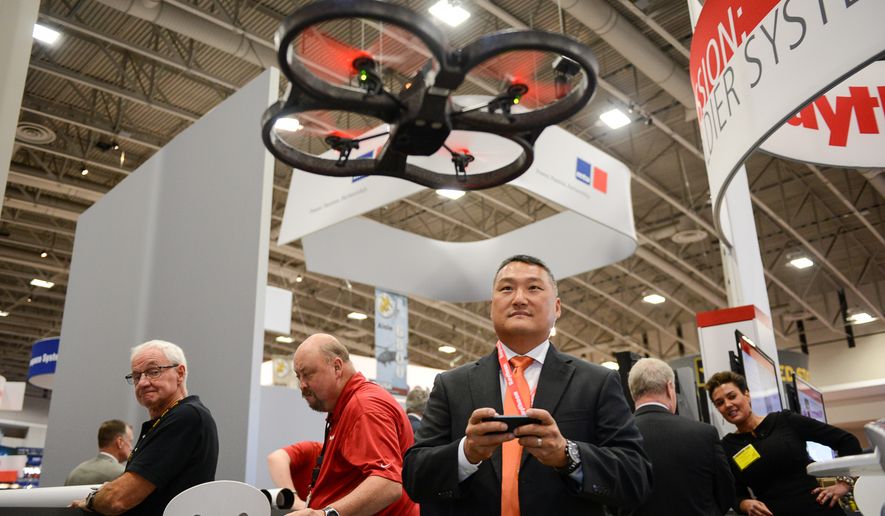The Pentagon has begun putting an anti-hacking system known as Electronic Armor onto high-tech drones to prevent adversaries from digitally penetrating and potentially crashing the unmanned aircraft from anywhere around the world, military officials said.
Representatives with defense contractor Raytheon Co. displayed the technology to the public for the first time at the Association of the United States Army’s annual meeting and exposition this week in Washington. They used two remote-controlled helicopters to demonstrate how an adversary could hack and crash a drone not protected by the technology and how a protected drone could resist the commands.
Concern about such threats rocked U.S. military and intelligence cybersecurity circles in 2011 when Iranian authorities claimed that they had brought down a U.S. RQ-170 drone.
The Obama administration initially balked at the Iranian claim but later acknowledged that the drone belonged to the U.S. government and asked Iran to return it.
Brian Stites, Raytheon’s portfolio manager of active cyber and special missions, described Electronic Armor as a revolutionary approach to protecting American weapons in “an incredibly contested” cyberdomain.
The technology is capable of detecting system penetrations regardless of the source, said Mr. Stites, a former Defense Department cryptologist who focused on supporting homeland defense through cyber operations and deployment.
“Cyberattacks can come from existing unknown vulnerabilities, counterfeit parts that have a built-in back door or intentionally placed malware,” he said. “These attacks could even be developed weeks or months ahead of time and executed by the adversary at the time of their choosing.”
Electronic Armor is not entirely new as a U.S. military defense mechanism. Mr. Stites said the Pentagon began installing the technology on some fighter jets and radar systems as early as 2009.
Army Col. Steve Warren, a Pentagon spokesman, confirmed that Electronic Armor is used to protect some U.S. drones.
Such cyberdefense systems, he said, are appealing to military officials because the technology protects expensive equipment from electronic attacks.
“It’s important to have a variety of defensive capabilities on our unmanned vehicles because those platforms face a variety of threats around the world,” Col. Warren said.
He declined to specify which of the military’s drones will be fitted with Electronic Armor.
“As a long-standing matter of policy, we won’t speak to the specifics of the protection measures on our unmanned aerial vehicles,” he said.
Mr. Stites said cyberdefense is critical for the Pentagon because an electron can traverse the globe in about 137 milliseconds, which means a cyberattack can occur in the blink of an eye.
“Cyberattacks or system intrusions may be executed from the building next door or from a coffee shop with free Wi-Fi anywhere in the world,” he said.
Raytheon is pushing the anti-tamper cyberarmor to all branches of the U.S. military. The company’s representatives speak regularly with members of each service and to suppliers that construct components for military drones, Mr. Stites said.
The product is particularly attractive, he said, because its anti-tamper software can be installed onto fighter jets, radar systems or drones after such equipment is built and in operation.
“Anti-tamper can either be built into the system right from the get-go or, in our case, it can be added on to the system later on,” he said.
• Maggie Ybarra can be reached at mybarra@washingtontimes.com.




Please read our comment policy before commenting.